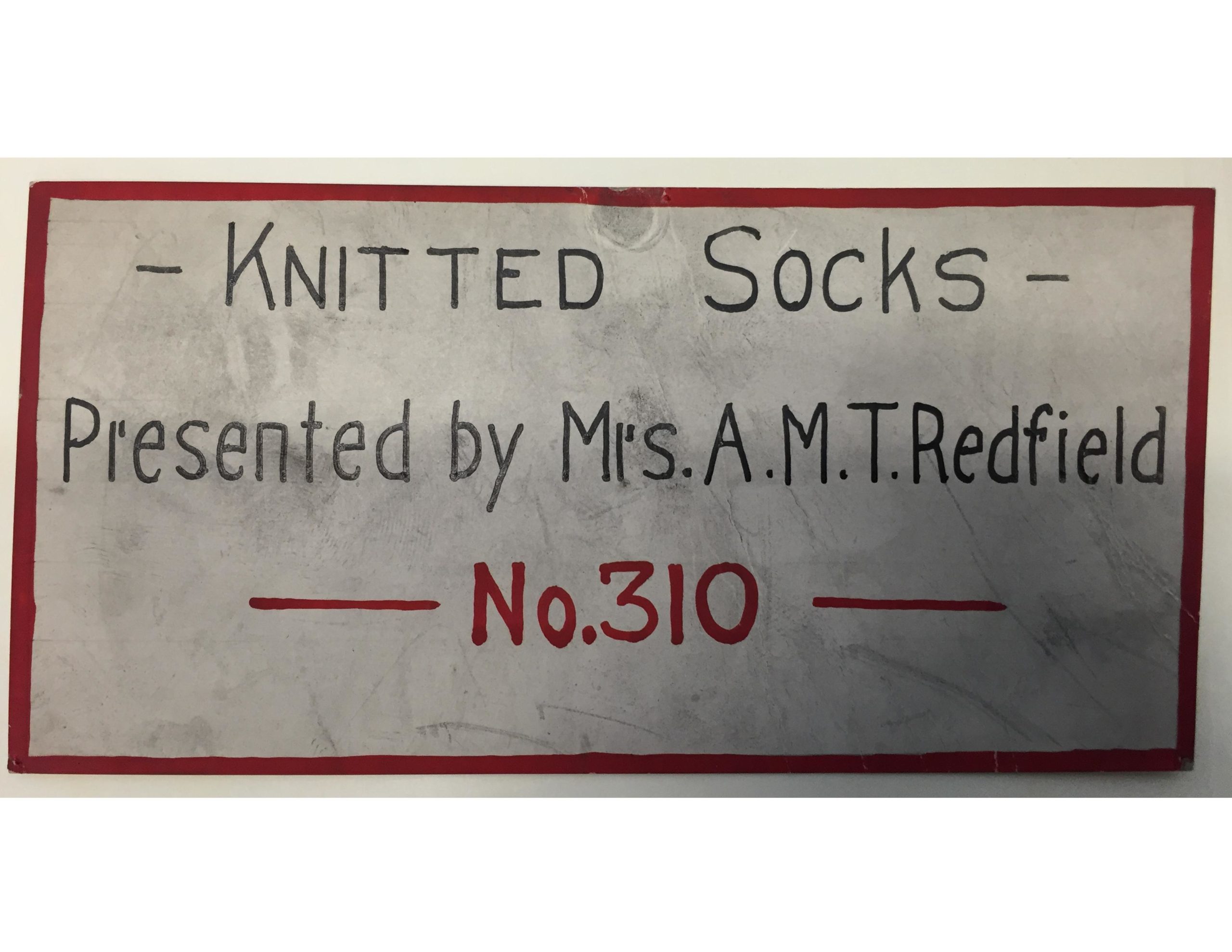
Onondaga Historical Association is home to hundreds of works of art, from oil portraits of Abraham Lincoln (by George Knapp) to watercolors of Columbus Circle (Betty Munro), OHA has a little bit of everything. What is often forgotten are the stories behind a piece of art – Who was the artist? How did it get into the collection?
In a new segment we’re calling “Artwork Wednesday,” OHA will dive into its collection of art, featuring a new piece on Wednesdays throughout the year and telling their stories.
This week’s pick is a pair, of socks that is.
 The Artist: The painter was a Syracusan who signed the work S.E. Harlow. He appears in city directories as an artist in the Sheldon Block in the 1850s, but not much is known about him other than . So why did he paint the socks? During his time as a soldier in the Civil War, he was a recipient of a pair of socks and, as a token of his appreciation, he painted this piece and sent it to the woman who made them: Ann Marie Tredwell Redfield.
The Artist: The painter was a Syracusan who signed the work S.E. Harlow. He appears in city directories as an artist in the Sheldon Block in the 1850s, but not much is known about him other than . So why did he paint the socks? During his time as a soldier in the Civil War, he was a recipient of a pair of socks and, as a token of his appreciation, he painted this piece and sent it to the woman who made them: Ann Marie Tredwell Redfield.
The Socks: During the Civil War, Ann Marie Tredwell Redfield, like many other women during the Civil War, knitted socks and prepared care packages for Union Soldiers. You’ll notice in the painting that the socks appear to be a bit uneven. Ann Marie was partially blind at the time from cataracts. Aware of this, she attached notes with the socks, apologizing for possible flaws.
The Woman and the Family (via the Women’s Fund): Ann Marie Tredwell Redfield was quite famous in her own right as an educator and author during the 19th century. Ann graduated from the Troy seminary and was the author of a widely disseminated book titled Zoological Science or Nature in Living Forms. The book, which was praised by educators and scientists throughout the United States and Canada, included a very impressively thorough “Chart of the Animal Kingdom.” Ann eventually served as the Preceptress of Onondaga Hollow, which would make her the early 19th century equivalent of Superintendent of Schools for Onondaga County. She was also the organizer of the Syracuse Historical Society, the President of which was nationally acclaimed preacher and abolitionist Reverend Samuel May. Her daughter, Margaret, was old enough to remember many milestones of the early history of our community and, consequently, she became one of the area’s early unofficial historians, following in the footsteps of her mother, and was one of the charter members of Onondaga Historical Association.
(From the book The Queens of American Society, by Elizabeth Fries Ellet) Before Ann Marie, the family has a deep connection with United States history. Her grandfather devoted himself to support the fight for American independence and later served in the first sessions of Congress. Further, her father fought in the War of 1812.
The Painting: This piece of art was treasured by the Redfield family and, sometime in the 1890s, it made its way to Onondaga Historical Association. According to OHA records, it was donated by Mrs. Ann Marie herself. The featured image, which shows the number 310, is a clue as to how early OHA received the piece. OHA board members in the late 19th century, some 40 or so years since the the organization began collecting, put together an inventory list and numbered items somewhat arbitrarily. Keep in mind, this is long before many of the museum collections policies and norms we know today came to be. With that in mind, what we can conclude from the number is that this painting is one of the earliest pieces of our collection.
 The painting was featured on the front page of a 1975 edition of The Conservationist after it was exhibited nationally in 1970 as part of a show of Trompe l’oeill (“fool the eye”) American art.
The painting was featured on the front page of a 1975 edition of The Conservationist after it was exhibited nationally in 1970 as part of a show of Trompe l’oeill (“fool the eye”) American art.
As it turns out, the painting is more than just a pair of socks.

